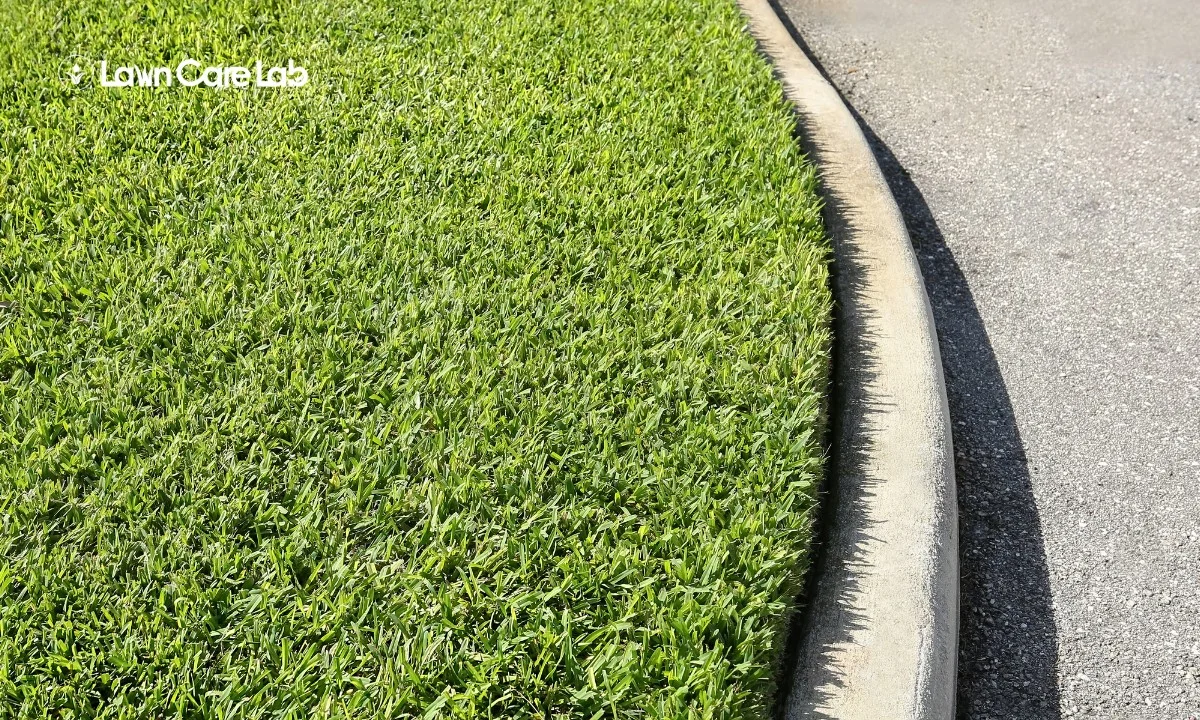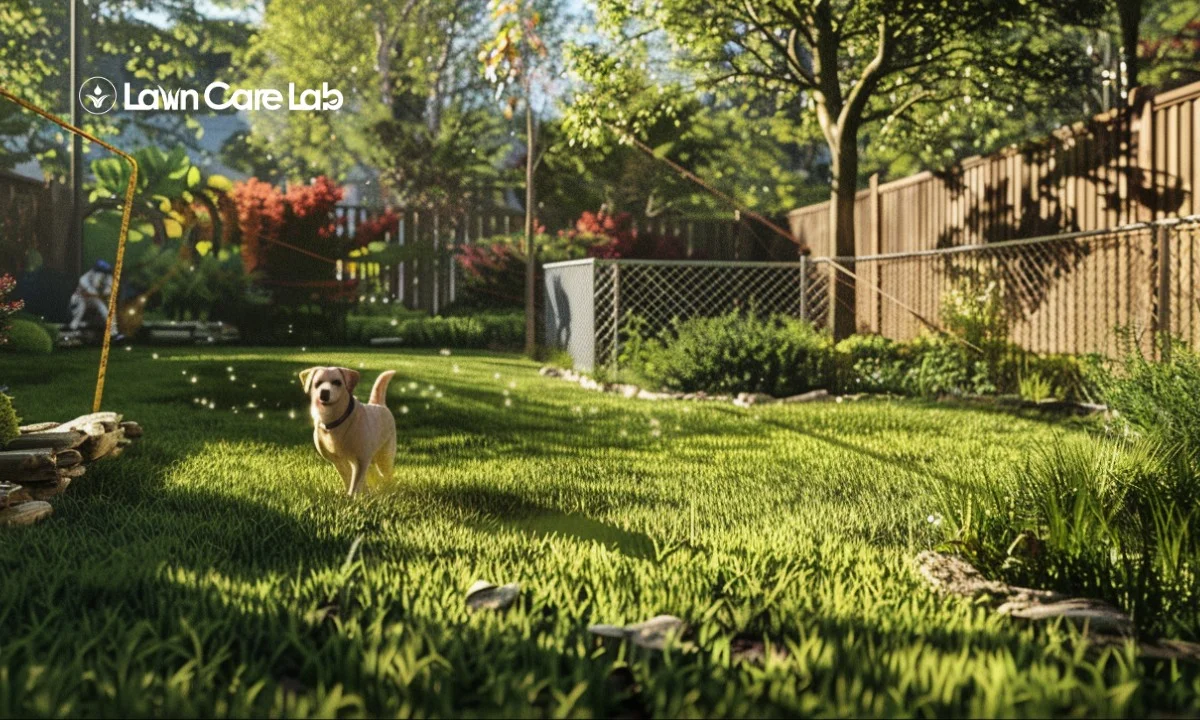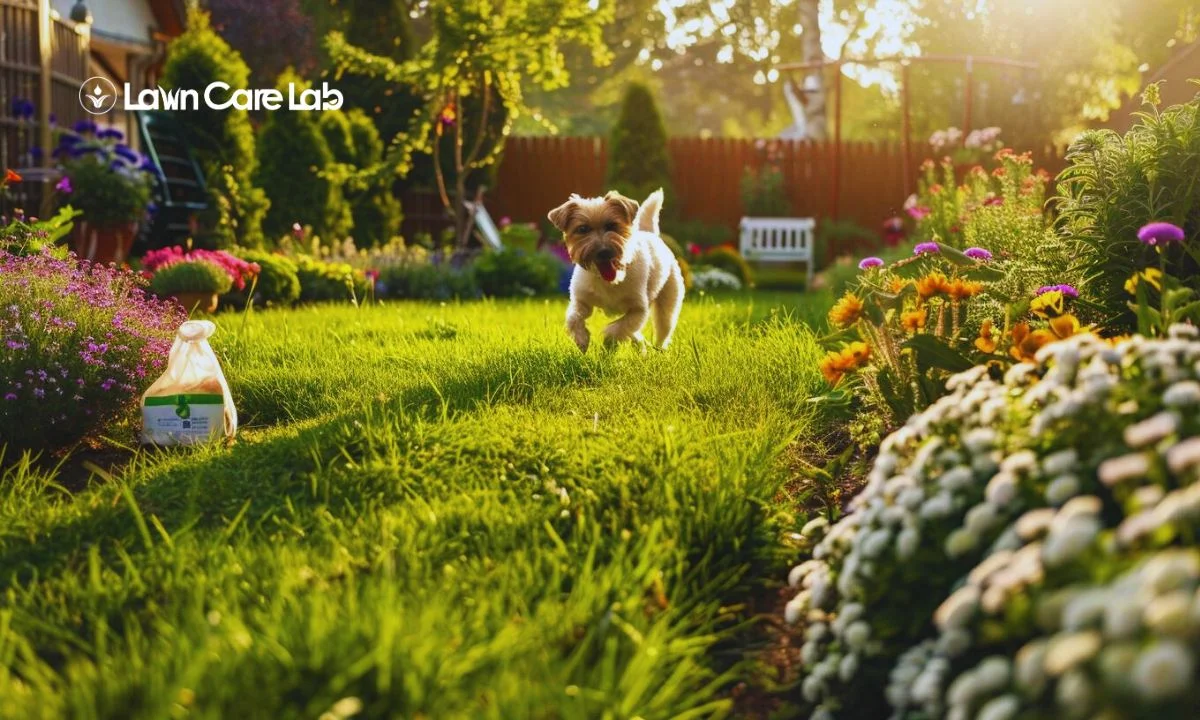St. Augustine grass, the fail-safe landscape choice, could be the game-changer you’ve been searching for.
In this article, you’ll learn about its unique characteristics, how to grow and care for it effectively, solve common problems associated with this type of grass, and compare it with other popular choices.
Highlights
- St. Augustine grass has a coarse texture and adds rustic charm to the landscape.
- It requires ample water and regular upkeep to thrive.
- St. Augustine grass is unsuitable for high foot traffic or backyard sports, while Bermuda grass is better due to its superior wear tolerance.
- St. Augustine grass requires more water than Bermuda grass, making Bermuda a better choice for water conservation.
Table of Contents
Overview of St. Augustine Grass
If you want to elevate your landscape, consider the fail-safe option of St. Augustine grass. This warm-season perennial grass is native to the coastal regions of the Gulf of Mexico.
It offers several benefits, such as its beautiful blue-green color and adaptability to humid climates.
However, St. Augustine grass is not without its drawbacks.
It requires medium to high maintenance and spreads quickly through aboveground stolons.
Benefits of St. Augustine Grass
St. Augustine grass resists pesky weeds and provides a soft, cushiony feel underfoot – it’s like stepping on nature’s plush carpet!
This unique grass thrives in heat, humidity, and salty conditions, making it an ideal option for your landscape. When you plant St. Augustine grass seed, you choose a relatively insect and disease-resistant lawn.
Selecting the best fertilizer for St. Augustine grass is essential to maintain its vibrancy. A suitable St. Augustine grass fertilizer enhances shade tolerance while boosting drought resistance capabilities.
For optimal results, consider using weed and feed for St. Augustine grass.
This will further fortify your lawn against potential threats while promoting robust growth simultaneously.
Disadvantages of St. Augustine
Despite its attractive features, there’s a downside to this lush green beauty – it’s frost-sensitive, hibernates in winter, and demands regular watering and mowing. St. Augustine grass requires higher nitrogen levels and more maintenance than Bermuda or Centipede grass.
This is not the turf for you if you’re looking for a low-maintenance landscape.
Bermuda grass vs. St Augustine becomes a clear contest, with Bermuda emerging as the less needy contender.
Moreover, problems like thatch build-up and take-all root rot can plague your lawn, demanding special care or even weed killer for St Augustine grass.
St Augustine is worth considering if you live in cooler climates since the centipede is less frost-prone.
Despite these drawbacks though, many find the rich green of St Augustine unbeatable.
Growing and Caring for St. Augustine Lawns
Looking to elevate your outdoor space with a lush St. Augustine lawn? Planting methods, watering and fertilization, mowing, thatching, and aeration are all key aspects you must consider.
Planting Methods
Regarding planting methods, St. Augustine grass thrives as plugs, sod, or stolons during the warmer spring and summer months.
The soil preparation is crucial for its optimal growth.
Ensure it’s well-aerated and rich in organic matter before you start planting.
To achieve a lush lawn:
- Space your plants 12-18 inches apart to allow room for growth.
- Use a sharp spade or plugger to make holes suitable for the plugs or sod.
- Ensure each plant gets equal sunlight exposure for uniform greenery.
- Maintain moisture levels but avoid overwatering, which could lead to disease.
- Regularly mow your lawn, maintaining a height of about 2-4 inches.
Watering and Fertilization
It craves 1-1.5 inches of water weekly to keep your St. Augustine grass vibrant. Be proactive in monitoring its hydration levels as this grass is drought-prone, and wilting should be avoided at all costs for optimal growth.
Now let’s talk nutrients. Nitrogen is a key player in your lawn’s diet, necessitating application 3-5 times annually to maintain that lush aesthetic you’re after.
Additionally, iron supplements could be game-changers in boosting your lawn’s health and vibrancy.
Innovative landscaping isn’t just about planting; it involves meticulous care too! It may seem demanding, but with the right watering and fertilization strategy, you’ll see a fail-safe landscape that only St. Augustine grass can deliver.
Mowing, Thatching, and Aeration
Moving on from watering and fertilizing, let’s delve into other crucial maintenance tasks – mowing, thatching, and aeration. These activities are pivotal in maintaining the lush appeal of St. Augustine grass.
Mowing is key. Regular weekly mowing at 3-4 inches height ensures robust growth.
Thatching is equally vital. Excess thatch can suffocate your turf; hence an annual dethatch will keep it healthy.
Aeration helps free compacted soil allowing roots to spread and capture essential nutrients.
Verticutting additionally aids in reducing thatch buildup.
Common Problems and Solutions
As you cultivate your St. Augustine lawn, it’s important to be aware of common issues such as weed infestation, diseases, and insect pests that can inhibit its growth and overall health.
Weed Control
In maintaining your beautiful St. Augustine grass landscape, it’s crucial to stay proactive in weed control, utilizing pre-emergents for grassy weeds and post-emergent herbicides for broadleaf invaders while carefully hand-pulling any strays to avoid damaging your lush carpet of green. Your lawn is a testament to your commitment to excellence and innovation; don’t let weeds sabotage that.
| Weed Control Strategy | Appropriate Weeds |
|---|---|
| Pre-emergent Herbicides | Grassy Weeds |
| Post-emergent Herbicides | Broadleaf Weeds |
| Hand Pulling | Stray or Resilient Weeds |
Diseases
Don’t forget to watch for signs of disease that can make a big difference in the health of your lawn.
Diseases like take-all root rot and a brown patch can turn a thriving green oasis into a struggling patchwork.
In your quest to level up your lawn with St. Augustine grass, it’s crucial to understand how to tackle these potential issues.
- First, improving drainage in your lawn is key. Excess water can lead to fungus growth.
- Second, reconsider your irrigation routine, as overwatering could invite diseases.
- Third, identify the first signs of disease – wilted or discolored blades.
- Fourth, don’t hesitate to use fungicides if needed.
- Lastly, ensure regular mowing at the proper height.
Insect Pests
Battling insect pests is a new battlefront in the war for a healthy, lush yard.
Pests like chinch bugs can pose an occasional problem to your St. Augustine grass, but don’t fret; innovative solutions are at hand.
The key lies in identifying and treating hot spots with insecticides promptly. This strategic approach will ensure maximum protection of your lawn’s overall health without overdoing chemical treatments.
Here’s a quick reference table to help you identify common pests:
| Pest | Signs | Treatment |
|---|---|---|
| Chinch Bugs | Yellowing patches on grass; bugs visible on close inspection. | Use grub-specific pesticides. |
| Grubs | Treat with broad-spectrum insecticide. | Treat with broad-spectrum insecticide. |
| Armyworms | Circular dead patches; caterpillars on grass blades early morning or late evening. | Treat with broad-spectrum insecticide |
Comparing St. Augustine to Other Grasses
You’ve likely heard about Bermuda’s rapid growth and spread, but did you know St. Augustine requires more care yet can provide a lush, green landscape?
On the other hand, Centipede may require less maintenance and tolerate shade better, but is it the right choice for your lawn?
Let’s dig into these comparisons further.
St. Augustine vs. Bermuda Grass
You might find yourself torn between St. Augustine and Bermuda grass for your lawn, each with its own unique features and care requirements.
Let’s break down the key differences:
- Texture: St. Augustine has a coarser texture that adds a rustic charm to your landscape, while Bermuda boasts a finer texture that gives off an elegant vibe.
- Care: St. Augustine requires more love and attention – ample water and regular upkeep to thrive.
- Wear Tolerance: If you expect high foot traffic or are into backyard sports, Bermuda is the better pick due to its superior wear tolerance.
- Water Needs: Bermuda leads the way for those conscious about water conservation as it requires less hydration.
St. Augustine vs. Centipede Grass
Let’s compare St. Augustine and Centipede grass – two popular choices for homeowners seeking to create a lush, green oasis.
When considering these two candidates for your lawn, consider their unique traits. St. Augustine thrives in warm climates and boasts a high tolerance for salt and shade, while the Centipede grass is low maintenance with a slow growth rate.
Here’s a quick comparison:
| Feature | St. Augustine Grass | Centipede Grass |
|---|---|---|
| Climate Tolerance | Thrives well in warm climates | Prefers mild climate conditions |
| Salt Tolerance | High | Medium |
| Shade Tolerance | Excellent | Average |
| Maintenance Level | Regular mowing required | Low-maintenance due to its slow-growing nature |
| Drought Resistance | Moderate | High |
Conclusion
You’ve seen how St. Augustine grass can revolutionize your lawn with its resilience and stunning green hue. With the right care, common problems become manageable.
It stands strong compared to other grasses, making it an excellent choice for a fail-safe landscape.
FAQs on St. Augustine Grass
What level of maintenance does St. Augustine grass require?
In what regions does St. Augustine grass thrive?
What common issues might I face with St. Augustine grass?
How long does St. Augustine grass usually last?
When is the optimal time to plant St. Augustine grass?
Is it possible for St. Augustine grass to regenerate after dying?
Does St. Augustine grass proliferate?
Which fertilizer is best for St. Augustine grass?
- How to Create a Lawn Care Schedule for Southern Climates - October 30, 2024
- How to Use Compost Tea to Boost Lawn Growth and Soil Health - October 23, 2024
- The Best Grasses for Saltwater-Exposed Lawns: Coastal Lawn Care - October 17, 2024




